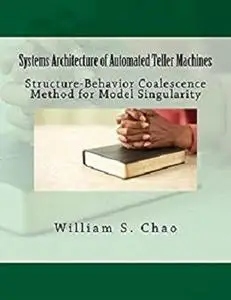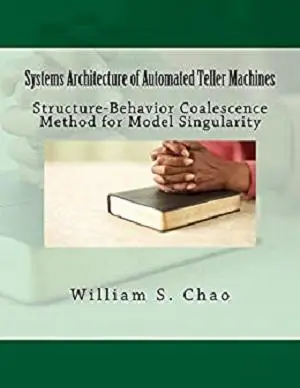Systems Architecture of Automated Teller Machines: Structure-Behavior Coalescence Method for Model Singularity by William S. Chao
English | December 8, 2017 | ASIN: B0781G6VMP | 106 pages | AZW3 | 2.10 MB
English | December 8, 2017 | ASIN: B0781G6VMP | 106 pages | AZW3 | 2.10 MB
A system is complex that it comprises multiple views such as strategy/version n, strategy/version n+1, concept, analysis, design, implementation, structure, behavior and input/output data views. Accordingly, a system is defined as a set of interacting components forming an integrated whole of that system’s multiple views.
Since structure and behavior views are the two most prominent ones among multiple views, integrating the structure and behavior views is a method for integrating multiple views of a system. In other words, structure-behavior coalescence (SBC) is a single model (model singularity) approach which results in the integration of multiple views. Therefore, it is concluded that the SBC architecture is so proper to model the multiple views of a system.
In this book, we use the SBC architecture description language (SBC-ADL) to describe and represent the systems architecture of the Automated Teller Machine (ATM). An architecture description language is a special kind of system model used in defining the architecture of a system. SBC-ADL uses six fundamental diagrams to formally grasp the essence of a system and its details at the same time. These diagrams are: a) architecture hierarchy diagram, b) framework diagram, c) component operation diagram, d) component connection diagram, e) structure-behavior coalescence diagram and f) interaction flow diagram.
Systems architecture is on the rise. By this book’s introduction and elaboration of the systems architecture of the ATM, all readers may understand clearly how the SBC-ADL helps architects effectively perform architecting, in order to productively construct the fruitful systems architecture.



